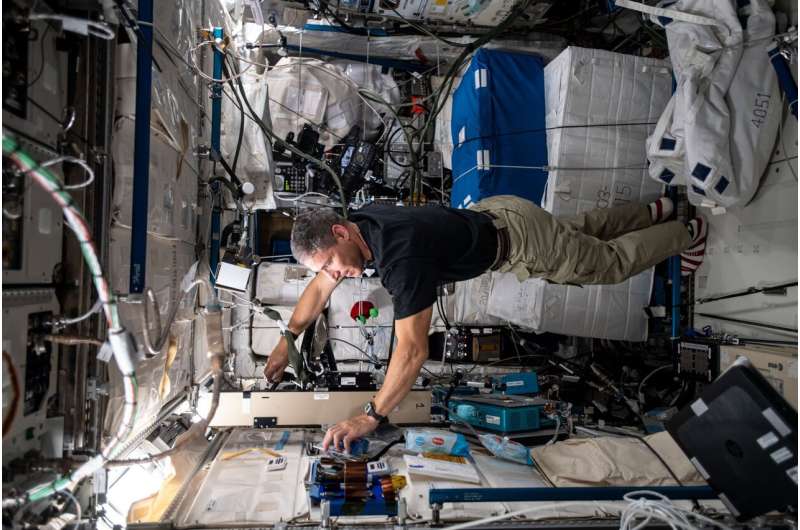Image: Study explores how astronauts' nervous systems adjust to microgravity

If the orientation of this image is a little disorienting, then you know how astronauts feel in their first few hours in space. in weightlessness, the human body loses its cues for up and down and requires adjustments in over to move and manipulate objects.
Researchers are studying extent of this adjustment through the Grip experiment, being set up in this image by NASA astronaut Mike Hopkins on board the International Space Station. ESA Kids' mascot Paxi is on standby to help.
When you lift a cup of coffee, you are moving it against gravity. The amount of force you use to lift that cup or move any other object is something you learn as a child but, in the weightlessness of space, it is something astronauts must relearn.
The Grip experiment studies how the central nervous system controls movement and the force astronauts use to manipulate objects with their hands.
Commissioned by ESA astronaut Thomas Pesquet in 2016, Grip was performed by both Alexander Gerst (2018) and Luca Parmitano (2019) during their Horizons and Beyond missions. Mike and his fellow NASA astronaut Victor Glover are next to participate.
During each session, Mike and Victor will hold an object equipped with measuring instruments between their right thumb and index finger and carry out a range of prescribed movements.
Prior to running on the Space Station, the Grip experiment flew on 20 parabolic flight campaigns. Results indicate that short-term exposure to microgravity induces subtle changes in how the forces used in gripping an object are coordinated. Our brains anticipate the effects of Earth's gravity even when it is not there. On the Space Station, researchers can now observe the long-term effects.
The results will help researchers understand potential hazards for astronauts as they move between different gravitational environments and improve the design of haptic interfaces used during deep space missions to the Moon and Mars.
Of course, findings from space-flown experiments land back on Earth. Results from Grip will deepen our understanding of human physiology and disease diagnosis on Earth. They are also helpful to engineers designing prosthetic limbs and will be used to help design robot-human interfaces so astronauts can command robots on other planets, allowing us explore farther in our Solar System.
Provided by European Space Agency





















